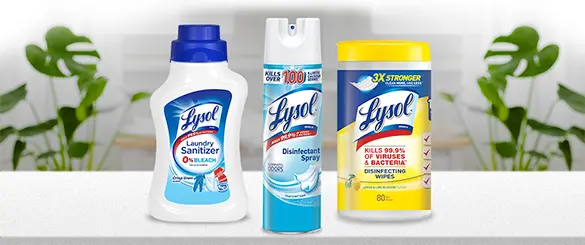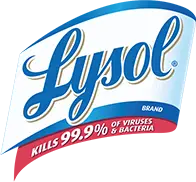Prevent Germs From Spreading
Healthy Hygiene Habits Lesson Plan for Kids
Knowing about our bodies and making healthy choices helps us take care of ourselves and stay in school. In this lesson, students make the connection that when we practice healthy habits, we can stay in school.

Goals and Skills
STUDENTS WILL:
- Understand and explain that we can spread germs by coughing, sneezing, and touching. Spreading germs can make us sick.
- Understand and explain that healthy hygiene habits like proper handwashing can help protect us from germs.
- Understand and explain that keeping ourselves healthy is important because we can stay in school.
- When we stay in school we learn, grow, and play.
- Create posters as part of The Healthy Habits Crew to share information with friends and family.
SUPPLIES AND PREPARATION:
- Chart paper/markers (to record student ideas)
- Bread
- Three quart-size plastic baggies
- Permanent marker
- One pair of plastic gloves
- Chart paper or poster board
- Coloring materials – crayons and markers
BACKGROUND FOR TEACHER
Visit the CDC’s Influenza Information for Schools & Childcare Providers to learn more about germ prevention and healthy habits. This site discusses influenza as well as other illnesses spread by germs. https://www.cdc.gov/flu/school/index.htm
Instruction Steps
EXPLAIN
What is a germ? Germs are very tiny and live all around us. Some germs are called bacteria and others are viruses. Germs are so small that you can only see them with a microscope.
Sometimes germs can make us sick with illnesses like colds and the flu. Doing simple things such as washing our hands can help us have a clean and healthy lifestyle. https://kidshealth.org/en/kids/germs.html
DISCUSS
Talk about how germs spread by coughing, sneezing, and touching. If we cough or sneeze into our hands or without covering our cough or sneeze, we can spread germs that might make others sick. If we have germs on our hands and then touch our eyes, put fingers in our mouths, or pick our noses, we might get sick.
There are germ hotspots all around us. Germ hotspots are places where lots of germs grow. Some examples of germ hotspots in the classroom are desktops, doorknobs, tabletops, and the computer keyboard. Ask students to name other possible germ hotspots around school.
Ask: When should you wash your hands? Begin the discussion with answers such as after using the bathroom, before snack and lunch, and after recess. Ask students to share other times handwashing is important.

Taking care of ourselves by simply washing our hands properly can help us stay clean and healthy. This is part of having a healthy lifestyle. We can work together to prevent germs from spreading.
Connect the idea of staying well and healthy to being able to attend school. If we stay well and healthy, we will be able to come to school every day. If we come to school every day, we help our brains to grow, be with our friends, and have more fun.
PASS THE GERMS
To teach about the importance of handwashing and stopping the spread of germs, complete the following science experiment. After recess—or some other time during the day—when students' hands are super germy, pass a piece of bread around so that everyone has a chance to hold it. Place this piece of bread in a clear plastic baggie and seal the bag. Label this baggie "dirty hands."
Review steps for washing hands.
- Wet with water.
- Add soap.
- Rub and scrub your hands.
- Remember to rub your fingernails and between your fingers.
- Wash for 20 seconds.
- Rinse.
- Dry.
All students should wash their hands with soap and water. Then, pass around a second piece of bread for them to hold. Place this piece of bread in a clear plastic baggie and seal. Label this baggie "clean hands." Wearing gloves, place a third piece of bread in a clear plastic baggie and seal. Labeled this baggie "control." You can introduce the idea of a control to students.
Students predict what will happen to the pieces of bread in each baggie during the next week. For one week, take time daily to observe and discuss the changes to the bread in each bag. Ask: Why do you think the bread looks the way it does? Draw conclusions about the importance of the healthy hygiene habit of handwashing and the spread of germs. Link conclusions to observations.
ART EXTENSION AND OUTREACH
Stay healthy/Stay in school. Explain to students that they can help themselves and others, friends and family, become part of the Healthy Habits Crew. Students should create small posters to hang in the classroom and around school.
Review how good hygiene habits such as handwashing, help stop the spread of germs. We stay healthy, and because we are healthy, we can stay in school. We have more fun; we get to help our brains grow and play with our friends when we stay in school. Brainstorm ideas for student artwork.

Music and Home Extension - Sing with families
Download the Healthy Habits Crew Lesson Plan
DISCLAIMER:
Healthy Habits® is Presented by Lysol® in collaboration with NEA and National PTA
SOURCES:
Education Standards: (NHES) Health: 1.2.1, 8.2.2, 7.2.1, 7.2.2; (NAEA) Visual Arts: VA:Cn10.1.Ka; VA:Cn11.1.Ka; Music: MU:Pr6.1.Ka; English Language Arts: CCSS.ELA-LITERACY.SL.K.5, CCSS.ELA-LITERACY.SL.K.6
For more resources, visit CDC – Be A Germ Stopper Poster
https://www.cdc.gov/handwashing/pdf/294906-handwashing-superhero-boy-p.pdf
https://www.cdc.gov/handwashing/pdf/294906-handwashing-superhero-girl-p.pdf
CDC – Healthy Schools Parent Engagement Materials https://www.cdc.gov/healthyschools/parentsforhealthyschools/p4hs.htm
CDC - BAM! Body and Mind https://www.cdc.gov/healthyschools/bam/teachers.htm
CDC - Handwashing Posters https://www.cdc.gov/handwashing/posters.html
CDC- Handwashing Stickers https://www.cdc.gov/handwashing/stickers.html





